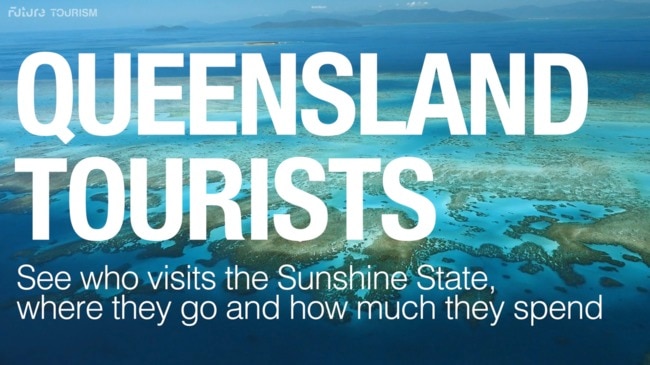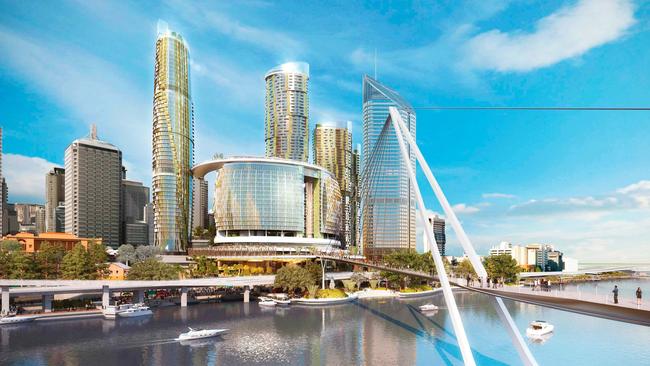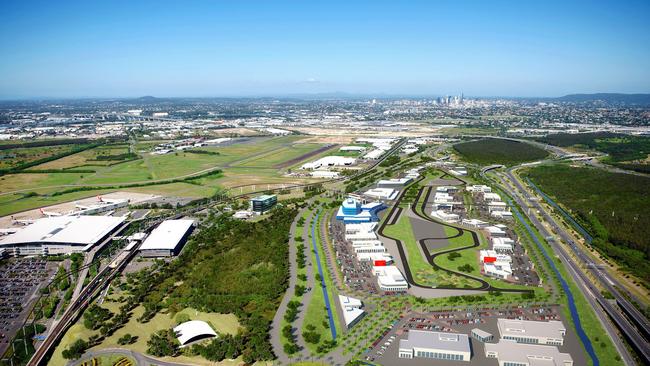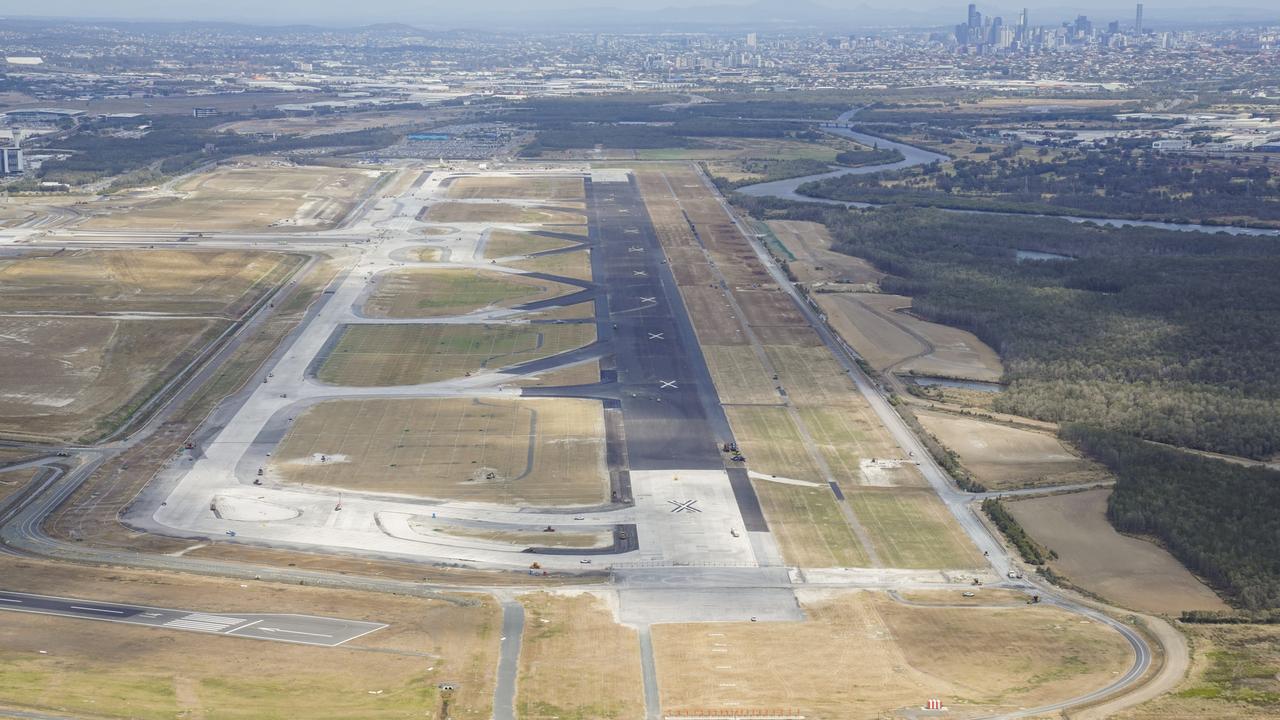Queensland is well placed for a boom in Chinese tourism
The number of Chinese visitors to Australia is predicted to reach 3.8 million by 2027 and if Queensland plans ahead it could be a major beneficiary, writes Bernard Salt.

Future QLD
Don't miss out on the headlines from Future QLD. Followed categories will be added to My News.
I HAVE spent much of the last two months assembling data insights looking at the future of tourism in Queensland and Australia. And amid the mountain of information extracted a single figure beams out — screams out — to tell a story, perhaps the story, of the future of tourism in this nation.
According to Tourism Research Australia the number of Chinese visitors to Australia will reach 3.8 million by 2027 up from 1.4 million today.
It’s not the scale of the projection that resonates with me; it is the relativity. Today there is a similar number of visitors from New Zealand as there is from China: both markets are around the 1.4 million mark. But towards the end of the 2020s the number from China — the number that I say beams out like a beacon — will be double that of the next largest group, the Kiwis at 1.8 million.
Brisbane tourism: Extended stays worth $18m a day
Brisbane tourism: Story Bridge activities for thrillseekers
Qld tourism: Baby boomers to provide future labour force

Older Queenslanders will recall the Japanese embrace of Australia, and especially of Queensland, to the extent that there are still direct flights between Cairns and Osaka. Japan’s visitor tsunami topped out at 751,000 in 1998 which was a tad bigger than the number from New Zealand (709,000).
In order for the China visitor market to careen so far ahead of our next biggest market within a decade, there needs to be a proliferation of aviation routes between Queensland (and other Australian) cities, and second, third and fourth tier cities in China. I reckon the new Sunshine Coast airport would be, should be, part of this wild bucking bronco, this unfolding story of opportunity in the tourism sector, along with airports at Brisbane, Coolangatta, Wellcamp and elsewhere.
Did you know that the greatest absolute growth in jobs in any single workplace location between the last two censuses across Queensland, wasn’t the Brisbane CBD or the Bowen Basin? It was the Brisbane airport precinct including surrounding industrial land: up 11,300 jobs in net terms over five years. The Brisbane CBD added barley 6000 jobs over this time frame.

Airports, together with city CBDs and port precincts (for distribution & logistics) are the new pistons driving city growth. And an important driver of airport growth is tourism where we Australians are engaging with our new best friend (China), who is ratcheting up the lifestyle ladder to the extent that they’re now lookin’ for a bit of a holiday. If this single confronting projection of the number of Chinese visitors is correct, then all our airports will need a makeover including terminals, runways and even signage. Bloody hell, the Gold Coast changed street signage to Japanese when visitation reached one-quarter of the number of Chinese projected by 2027.
It is true that international visitation to Australia has skewed towards Melbourne and Sydney over recent years because of their burgeoning student market in “prestigious” universities. But only Queensland can deliver the quintessentially “Australian” beach-outback-city combination that for so long has been so beloved by our overseas visitors.

What is required is new investment in visitor infrastructure namely hotels (Cairns gets a big tick on this score), airports (generally, tick), inner-city cultural, arts & gaming precincts (Queen’s Wharf and Broadbeach yes), compelling new attractions (patchy, I would have thought), and signature events (see below).
If Australia is to have twice as many visitors from China as from New Zealand by 2027, then what does this trajectory suggest for the 2030s?
Perhaps Queensland could lead Australia in promoting Mandarin as the preferred second language taught in secondary schools. And then there’s the rise of other tourism markets from places like India although the projections from here are swamped by those from established markets and the China behemoth. I argue that Queensland has a natural advantage in securing a bigger share of the burgeoning visitor market from China. Mum and dad from Shanghai might be determined to visit their child studying in Melbourne, but surely the return trip can be siphoned-off into a Queensland stopover.

There is a reason why the Cairns-Osaka air route survives 20 years after the peak in Japanese visitors. It’s because this is Australia’s closest east-coast connection into Asia’s middle class. What the surging China visitor market requires is better awareness of — or better social cachet value from — a Queensland stopover.
This could be delivered via a successful 2032 Olympics bid by southeast Queensland.
There are a number of reasons why I think this bid is important — indeed, I argue, crucial — for Queensland, but one definite dividend will be name and brand recognition with China’s new middle-class travellers.
It’s not so much that mum and dad from Shanghai don’t know of Queensland’s tourism assets, it’s their calculation that a stopover holiday doesn’t deliver a sufficient recognition factor with friends and family to warrant the investment of time and money.
An Olympics bid would legitimise — perhaps even necessitate — the inclusion of a Queensland holiday in the hop-hop airlift home via any number of the Sunshine State’s international airports. Oh, and in the meantime, while Sydney and Melbourne are snaffling the largest share of Australia’s Chinese students, Queensland should be competing left, right and centre in this lucrative education — and spin-off tourism — market.
The future of tourism in Queensland isn’t just about snaring new projects, or developing a whizzbang advertising campaign, it involves holistic thinking about how this state can deliver engagement and a value-for-money experience with this region’s fastest growing traveller markets.
Bernard Salt is managing director of The Demographics Group



